SciArt profile: Deepti Trivedi
Posted by the Node, on 2 August 2023
In this SciArt profile, we spoke to Deepti Trivedi, who has a background in neurogenetics in flies and mice, and does drawings inspired by Drosophila research.
Can you tell us about your background and what you work on now?
I grew up in Delhi, where my parents had set up a life, moving from rural part of central India, right around the time I was born. My dad was an ecotoxicologist working for the Government and mom a homemaker. Growing up I was a shy, yet confident kid. After my schooling, I took up Biochemistry at University of Delhi. My first experience with real research happened, when by alignment of several coincidences, I ended up in Bangalore to do Masters by research in a Drosophila neurogenetics lab. I can safely say, this was the first time, I knew that I wanted to be a researcher. This was a really exciting time for me to be able to ask open ended questions and wonder how they could be answered through experiments.
I was one of the beneficiaries of the travel award that The Company of Biologists offers to young researchers, using which I went to USA (SUNY, Buffalo and CSHL) for 6 months to learn electrophysiology. I used this in my Masters’ thesis work. By this time, I knew I wanted to do a PhD. I did a PhD from University of Cambridge as a Gates Cambridge Scholar where I studied phototransduction in flies. After PhD, I went to USA for a postdoctoral training (UCLA and UTMB) further studying neurogenetics in flies and mice. For past 9 years, back in India, at National Centre for Biological science, Bangalore, I set up CRISPR Cas9 based genome engineering services in flies and have been managing a core research facility.
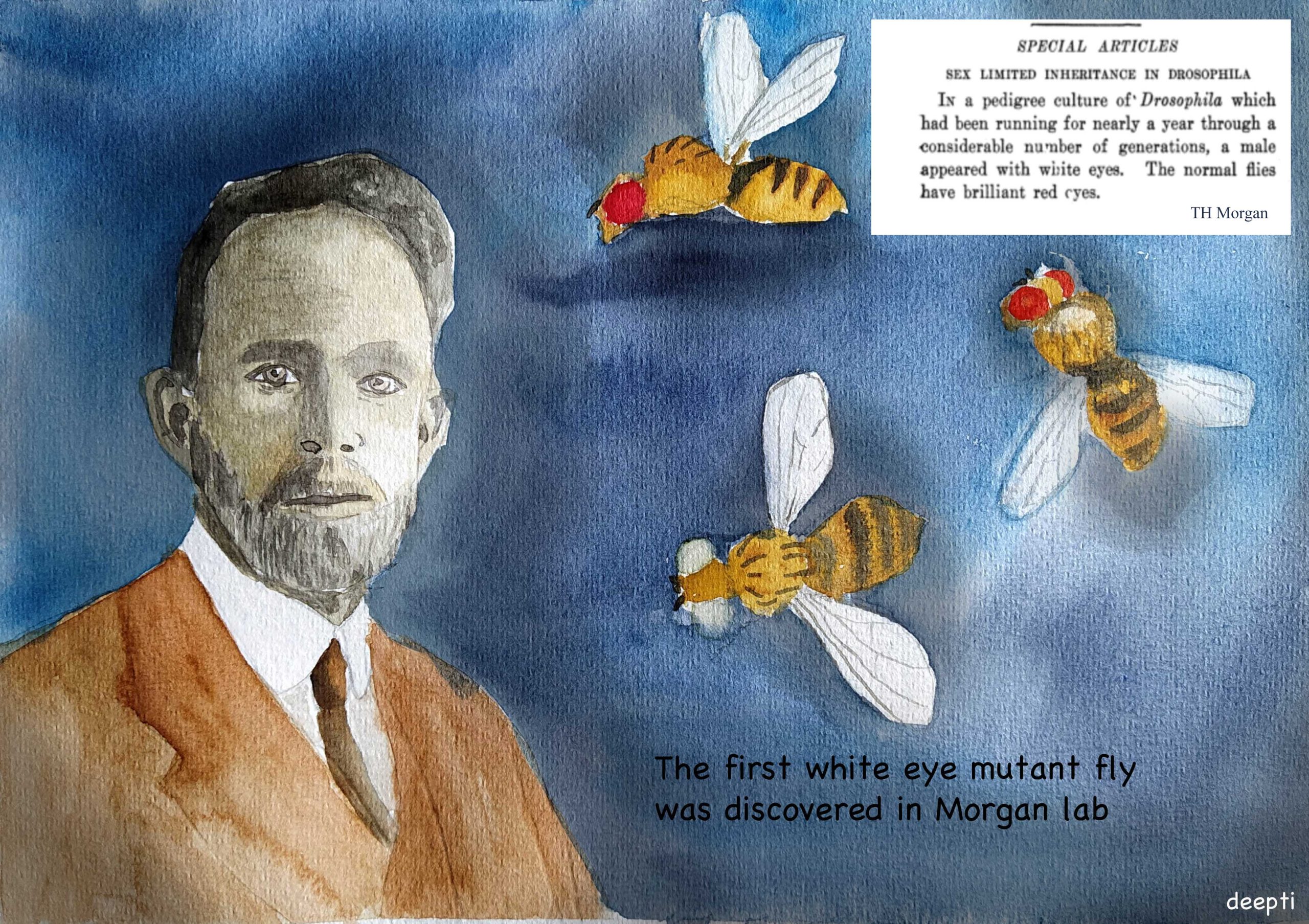
Were you always going to be a scientist?
Although I don’t really recall how I got interested in “science”, I feel it seamlessly integrated into the fabric of my life. Growing up, a lot of discussions at home surrounded topics of nature, plants, animals and habitats. There was a general tendency to approach regular life discussion, such as cooking or exercising, with scientific logic. There wasn’t much discussion about religion, politics, history, business, money or any other topics. So, looking back, the general outlook was already quite skewed towards science. However, taking it seriously as a career choice did not come that obviously. In fact, it was drawing and art that I spent a lot of time in. I remember wanting to be an architect, an artist or a fashion designer at some point. All these interests were deeply rooted in the fact that I really enjoyed the process of drawing and working with my hands, crafting little knick-knacks. In India, at that time, the path to pursuing art as a subject lay solely within the humanities program. This meant delving into social sciences like history, geography, economics, politics, and languages, in which I had no interest, at that time. On the other hand, I loved maths and sciences. It also helped that I had fantastic science teachers in school and then in college. Although it was no brainer to take up sciences for higher studies, I was not sure what exactly I wanted to do in sciences.
Looking back, most of my life decisions have been on the go, with no long term career goals that I have passionately pursued. However, I have always gotten extremely excited about short term goals and have pursued them with great rigour and enthusiasm. As a scientist who runs a core research facility, a shared resource for many scientist, I feel, I have found exactly the kind of work that I like. I help scientists in their passionate pursuits to scientific discovery by making a small contribution to their research programs.
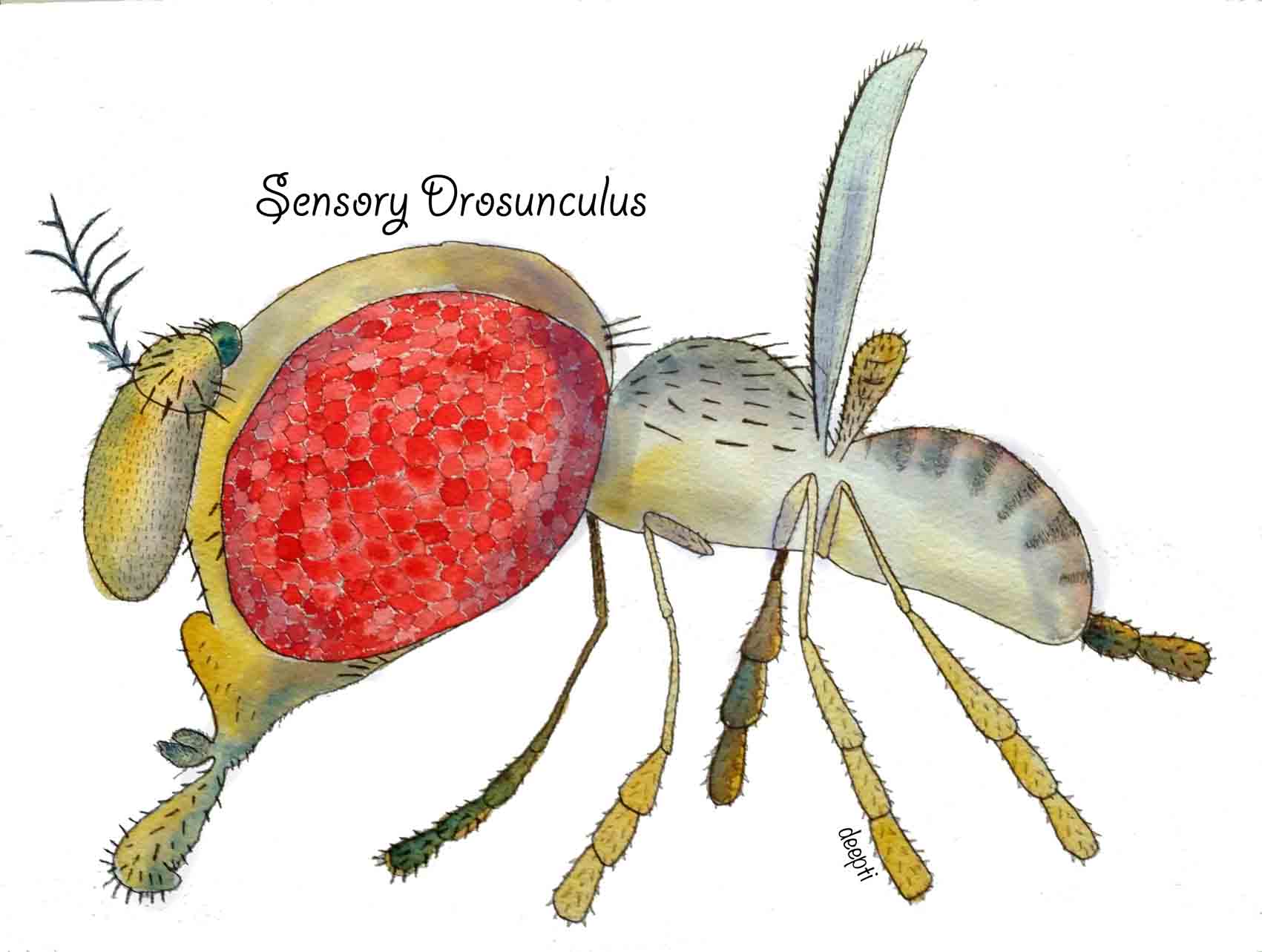
And what about art – have you always enjoyed it?
As I said, I remember doing art much more vividly from my childhood than science, perhaps because there are no artists in the family. The feeling that you are doing something unique and getting appreciated for it, is kind of nice for a little kid. I doodled all the time – while studying, while listening to radio, while watch television, while on holidays with parents, inside text books, everywhere. I took part in all the art activities at school, and in the community. However, at some point during my late teens (as I picked up science that I suddenly became too passionate about), I stopped doing art completely. I picked it up again only towards the end of my PhD at Cambridge.
I now realise that art is not something I like to do all the time. I go through these phases when I do a lot of it, and then I don’t do any. Great that I didn’t choose it as a career, otherwise I would go through a lot of famines.
What or who are your most important artistic influences?
Nature is the greatest influencer. I am also deeply influenced by traditional art making and art practices.
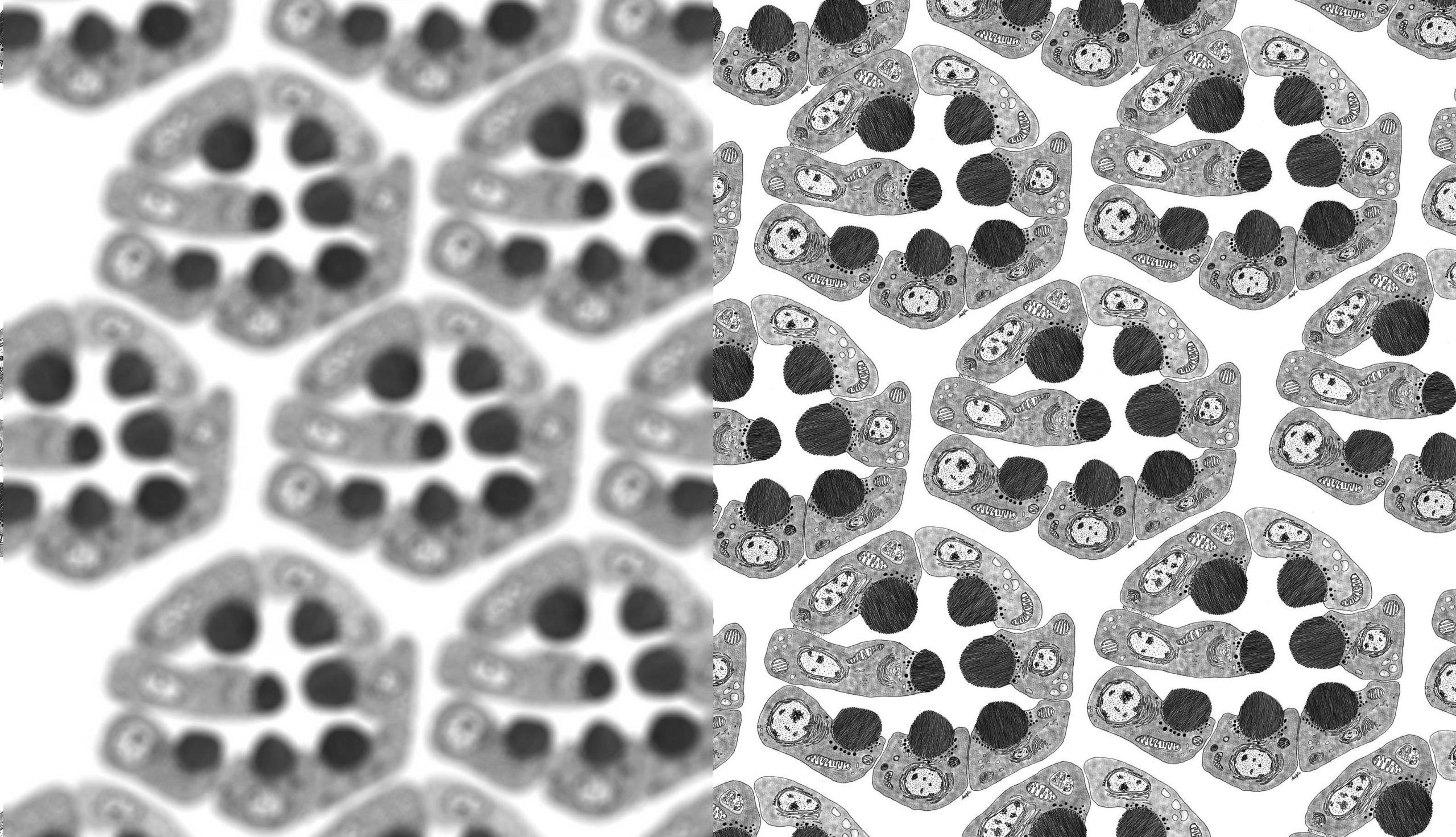
How do you make your art?
As I mentioned there is always a long pauses which can last up to months before I pick up art and draw or paint something. However, it doesn’t mean that I am not thinking about art or in artistic way. An art process requires a lot of thinking for me and I pick up pen and paper only when an idea has clicked and has made an impact on me for a few days and stayed there and compelled me to go ahead with the idea. I usually have thought through what exactly I want to make, which medium I want to use, what size, what colour scheme etc. The actual work may require just 10 minutes, or 10 hours, but it is an immersive experience and there is enough energy that I can sit through the night finishing a piece if it requires. Once I am done, I am done and may not touch art for several months. I don’t repeat an idea or make several iterations of the same piece. It is usually a one-time process for me as if to go through a once in a life time experience and back. However, it is a deeply satisfying process.
Sometimes, I am asked to do something by friends or colleagues, which requires rounds of corrections or changes. Those are not the things that I enjoy. One more reason why this could not have been a sound career choice for me.
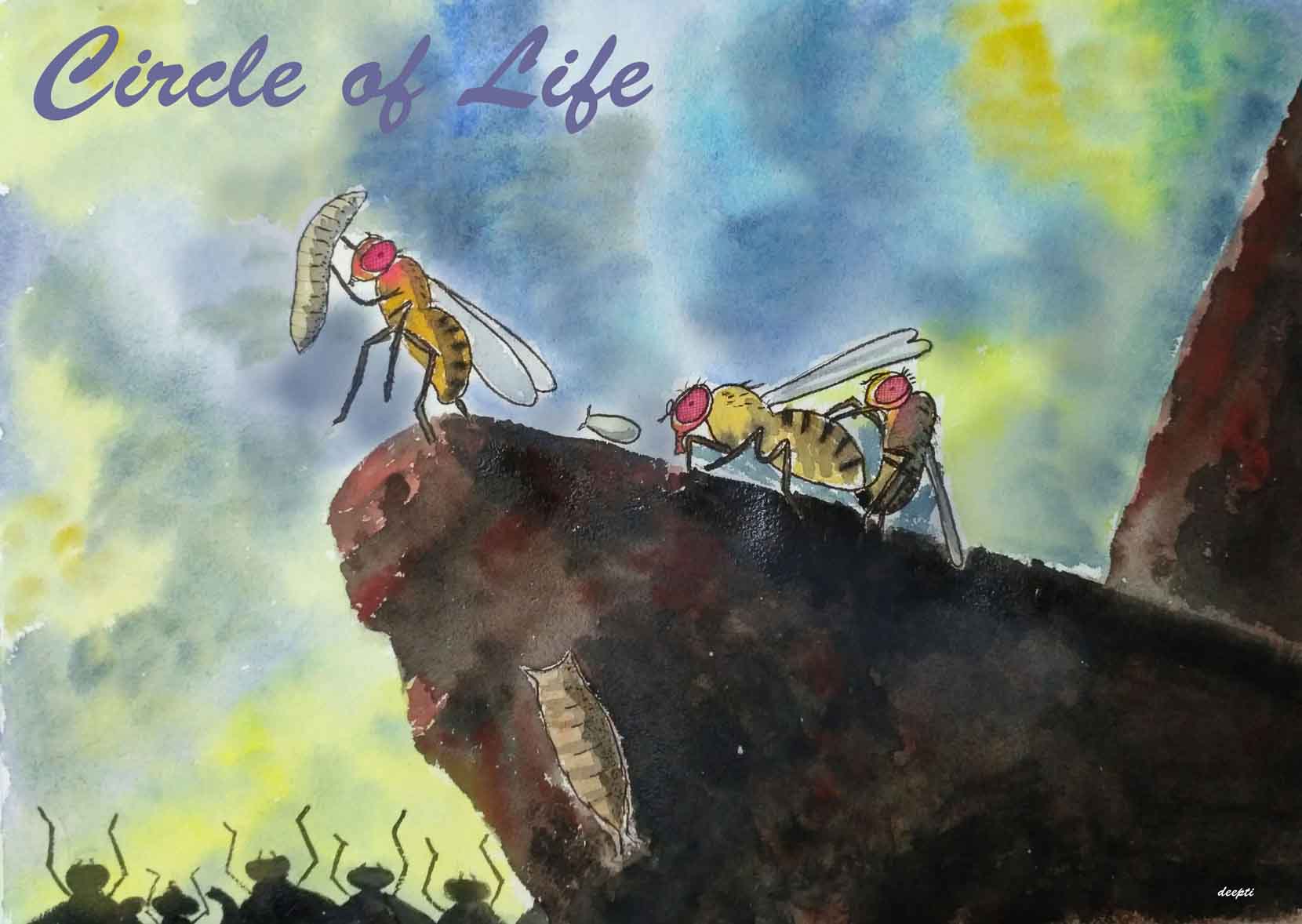
“From the day we arrive on the planet
And, blinking, step into the sun
There’s more to see than can ever be seen
More to do than can ever be done”
From “Circle of life” on which this painting is based. Drosophila has certainly been instrumental for us to see more than ever could be done otherwise.
Does your art influence your science at all, or are they separate worlds?
I am sure it does influence, but in a more sublime way rather than tangible. Both art and science, as passionate pursuits of truth, are deeply creative and immersive processes. Both require you to observe something as they are, but also to wonder what could be. I have always used drawing as a tool to understand scientific concepts, and also sometimes to avoid distractions to focus. I am a visual person and so if I am to listen to something, I usually use drawing to understand what is being said.
I feel art is more open, more non-restrictive. There are no rules to follow and so it also gives me a respite when things are not working as one wants in science or life.
What are you thinking of working on next?
There are many ideas, mostly revolving around science outreach for younger audience. I have a preteen kid and I think a lot about catering to that age group kids through art and science. I have still not pinpointed what exactly it is and hence currently going through an artistic lull period.
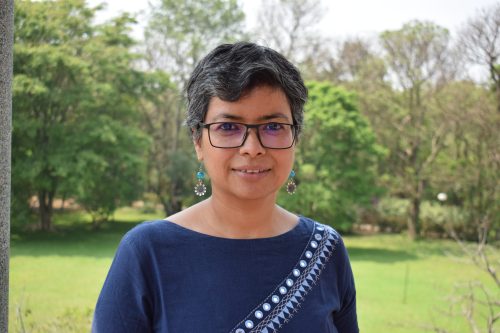
Find out more about Deepti’s work:
https://deeptisjourney.wordpress.com
Twitter handle: @deeptrivedivyas


 (No Ratings Yet)
(No Ratings Yet)